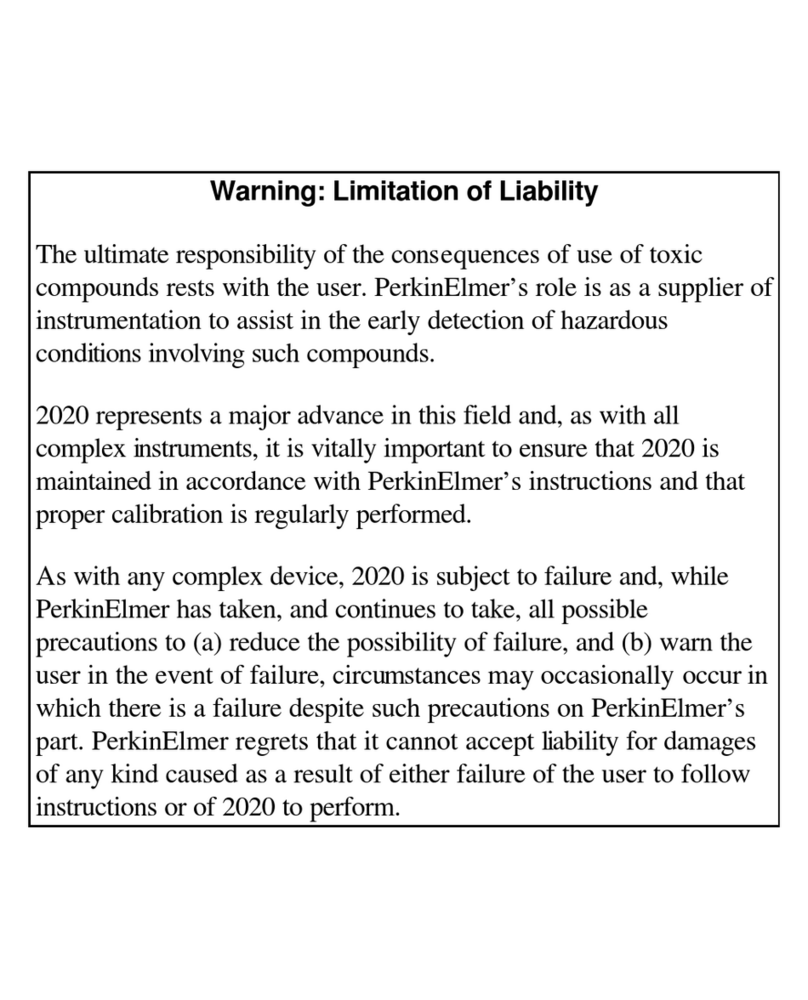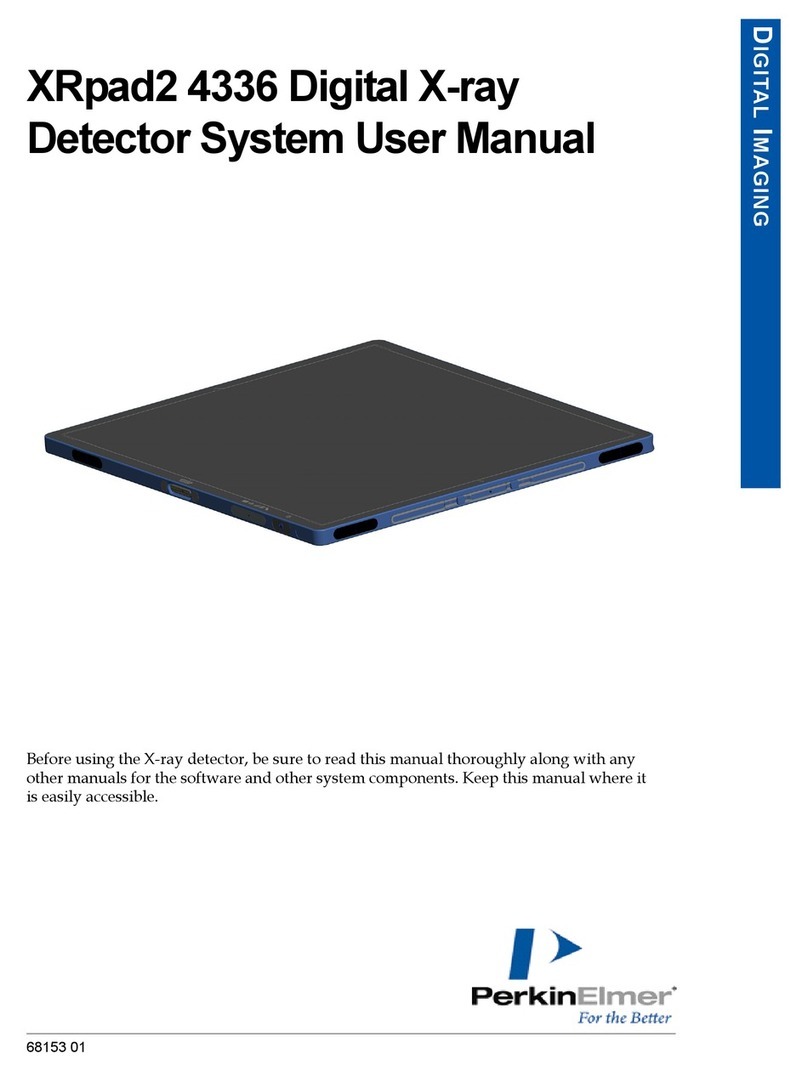
Release History
Part Number Release Publication Date
09936504 BJune 2000
Any comments about the documentation for this product should be addressed to:
User Assistance
PerkinElmer
710 Bridgeport Avenue
Shelton, Connecticut 06484-4794
U.S.A.
Or emailed to: info@perkinelmer.com
Notices
The information contained in this document is subject to change without notice.
Except as specifically set forth in its terms and conditions of sale, PerkinElmer makes
no warranty of any kind with regard to this document, including, but not limited to, the
implied warranties of merchantability and fitness for a particular purpose.
PerkinElmer shall not be liable for errors contained herein for incidental consequential
damages in connection with furnishing, performance or use of this material.
NOTE: TotalChrom is the updated version of the software previously marketed as
Turbochrom. This product is compatible with TotalChrom and Turbochrom version 6.1.x.
Copyright Information
This document contains proprietary information that is protected by copyright.
All rights are reserved. No part of this publication may be reproduced in any form
whatsoever or translated into any language without the prior, written permission of
PerkinElmer, Inc.
Copyright © 2003PerkinElmer, Inc.
Produced in the USA.
Trademarks
Registered names, trademarks, etc. used in this document, even when not specifically
marked as such, are protected by law.
PerkinElmer is a registered trademark of PerkinElmer, Inc.
TotalChrom Client/Server and TotalChrom Workstation are trademarks of PerkinElmer, Inc.
Turbochrom is a trademark of Applera Corporation.





























